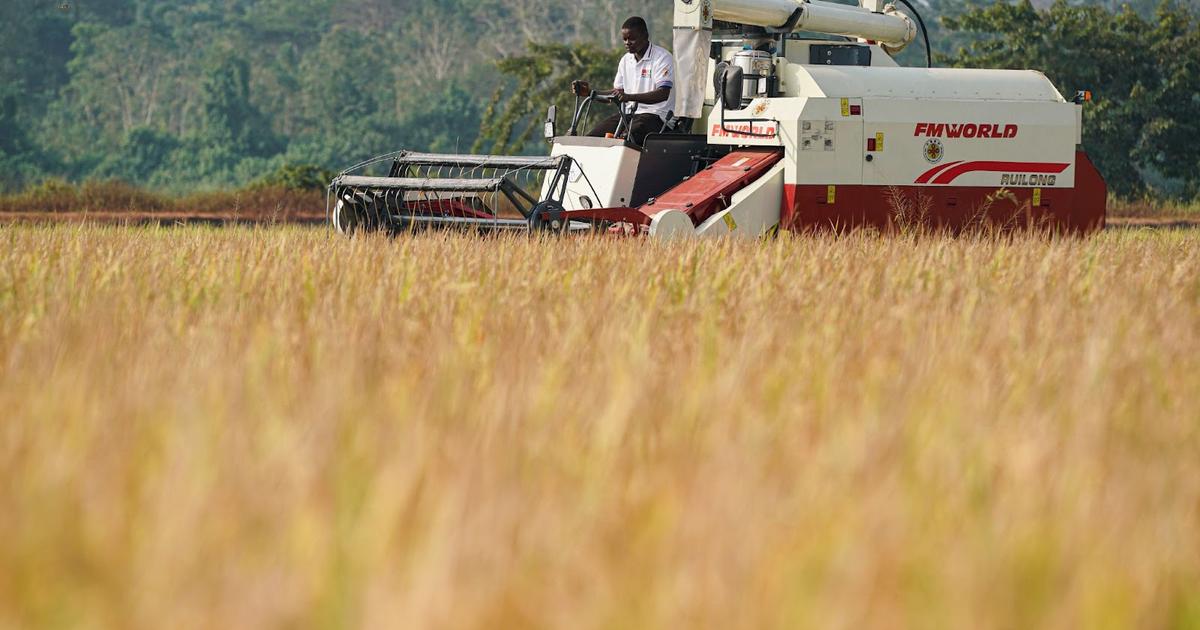African agriculture’s potential gamechanger | Semafor
African agriculture’s potential gamechanger Semafor


Policymakers and Donors Urged to Increase Investment in Agricultural Research and Development in Africa

A new study conducted by the nonprofit Breakthrough Institute, based in California, emphasizes the need for policymakers and donors to significantly increase investment in agricultural research and development (R&D) in Africa. The study suggests that along with R&D, advisory services for farmers should also be prioritized to develop new crop varieties and boost production.
The Importance of Sustainable Development Goals (SDGs)
The Sustainable Development Goals (SDGs) play a crucial role in guiding efforts towards sustainable agricultural development in Africa. By aligning investment in agricultural R&D and advisory services with the SDGs, policymakers and donors can contribute to the achievement of these global targets.
Agricultural Challenges in Africa
Africa currently faces significant challenges in its agricultural sector. Cereal crop yields in the region are the lowest in the world. The study highlights that public agricultural R&D spending in sub-Saharan Africa lags behind most other parts of the world. The African Union (AU) has identified at least 20 African governments that allocate insufficient funds to their national agricultural research and extension systems (NARES), rendering them ineffective.
Success Story: Ethiopia
The study cites Ethiopia as a success story that demonstrates the potential impact of increased investment in agricultural R&D and advisory services. Between 2000 and 2015, Ethiopia tripled its expenditure on public agricultural research. The country also expanded its number of extension officers, who provide advisory services to farmers. As of 2018, Ethiopia accounted for half of all agricultural extension workers in sub-Saharan Africa. Consequently, Ethiopia has achieved the highest rate of agricultural growth in the region since 2000, according to the UN’s Food and Agriculture Organization (FAO).
The Role of Research and Support for Farmers
Emma Kovak, one of the authors of the report, emphasizes the importance of conducting research and developing new crop varieties while ensuring that farmers receive adequate support. Kovak highlights that there have been instances where improved crop varieties were not effectively disseminated to farmers due to a lack of sustainable on-the-ground support. To maximize the impact of agricultural R&D, it is crucial to provide farmers with the necessary resources and assistance.
SDGs, Targets, and Indicators
1. SDGs Addressed or Connected to the Issues Highlighted in the Article:
- SDG 2: Zero Hunger
- SDG 9: Industry, Innovation, and Infrastructure
- SDG 17: Partnerships for the Goals
2. Specific Targets Under Those SDGs Based on the Article’s Content:
- SDG 2.3: By 2030, double the agricultural productivity and incomes of small-scale food producers, particularly women, indigenous peoples, family farmers, pastoralists, and fishers, including through secure and equal access to land, other productive resources and inputs, knowledge, financial services, markets, and opportunities for value addition and non-farm employment.
- SDG 9.5: Enhance scientific research, upgrade the technological capabilities of industrial sectors in all countries, in particular developing countries, including, by 2030, encouraging innovation and substantially increasing the number of research and development workers per 1 million people and public and private research and development spending.
- SDG 17.16: Enhance the global partnership for sustainable development, complemented by multi-stakeholder partnerships that mobilize and share knowledge, expertise, technology, and financial resources to support the achievement of the sustainable development goals in all countries.
3. Indicators Mentioned or Implied in the Article to Measure Progress towards the Identified Targets:
- Increased agricultural productivity and incomes of small-scale food producers
- Secure and equal access to land, productive resources, inputs, knowledge, financial services, markets, and opportunities for value addition and non-farm employment
- Enhanced scientific research and technological capabilities in the agricultural sector
- Increase in the number of research and development workers per 1 million people
- Increased public and private research and development spending
- Strengthened global partnerships for sustainable development
- Mobilization and sharing of knowledge, expertise, technology, and financial resources to support the achievement of the sustainable development goals
4. Table: SDGs, Targets, and Indicators
| SDGs | Targets | Indicators |
|---|---|---|
| SDG 2: Zero Hunger | SDG 2.3: By 2030, double the agricultural productivity and incomes of small-scale food producers, particularly women, indigenous peoples, family farmers, pastoralists, and fishers, including through secure and equal access to land, other productive resources and inputs, knowledge, financial services, markets, and opportunities for value addition and non-farm employment. | – Increased agricultural productivity and incomes of small-scale food producers – Secure and equal access to land, productive resources, inputs, knowledge, financial services, markets, and opportunities for value addition and non-farm employment |
| SDG 9: Industry, Innovation, and Infrastructure | SDG 9.5: Enhance scientific research, upgrade the technological capabilities of industrial sectors in all countries, in particular developing countries, including, by 2030, encouraging innovation and substantially increasing the number of research and development workers per 1 million people and public and private research and development spending. | – Enhanced scientific research and technological capabilities in the agricultural sector – Increase in the number of research and development workers per 1 million people – Increased public and private research and development spending |
| SDG 17: Partnerships for the Goals | SDG 17.16: Enhance the global partnership for sustainable development, complemented by multi-stakeholder partnerships that mobilize and share knowledge, expertise, technology, and financial resources to support the achievement of the sustainable development goals in all countries. | – Strengthened global partnerships for sustainable development – Mobilization and sharing of knowledge, expertise, technology, and financial resources to support the achievement of the sustainable development goals |
Note: The specific indicators mentioned in the article have been included in the table.
Behold! This splendid article springs forth from the wellspring of knowledge, shaped by a wondrous proprietary AI technology that delved into a vast ocean of data, illuminating the path towards the Sustainable Development Goals. Remember that all rights are reserved by SDG Investors LLC, empowering us to champion progress together.
Source: semafor.com

Join us, as fellow seekers of change, on a transformative journey at https://sdgtalks.ai/welcome, where you can become a member and actively contribute to shaping a brighter future.







